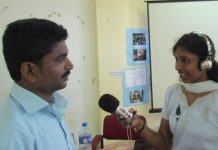 Journalists who are committed to fact-checking, as we should all be, have several methods available to help them deal with fake news.
Journalists who are committed to fact-checking, as we should all be, have several methods available to help them deal with fake news.
Fact-checking
In our article ‘Fact-checking and adding context‘ we looked at some of the traditional method for verifying information.
In the piece ‘Beyond fact-checking‘ we went beyond simple verification to applying critical thinking and contextual analysis to our fact-checking.
And in ‘Lateral reading for journalists‘ we looked at methods that have been used by journalist for many years but which have become easier and faster to apply thanks to the internet.
All the methods mentioned above are designed to help journalists weed out misinformation and disinformation in a bid to provide robust, accurate, and factual information.
Now we look at the SIFT method of fact-checking, research, and adding context, which has been developed by Mike Caulfield and is increasingly being used in journalism training and education.
SIFT teaches students how to critically evaluate information online through four steps: Stop, Investigate the source, Find better coverage, and Trace claims, quotes, and media back to the original context.
While it’s primarily aimed at combating misinformation in the digital age, it also offers computer-assisted benefits that can enhance traditional journalism practices. SIFT has been adopted in various educational settings, including media literacy courses and journalism programmes.

The SIFT method provides a straightforward process for evaluating online information. Its four distinct elements are:
- Stop:
- This initial step emphasises pausing before engaging with any information. It encourages users to resist the urge to immediately share or believe something, and instead, to take a moment to reflect.
- Investigate the source:
- This involves determining the credibility and background of the source of the information. It encourages journalists to apply “lateral reading,” which means looking at what other sources say about the original source.
- Find better coverage:
- This step advises seeking out more reliable and trustworthy sources that provide better coverage of the claim or topic. It encourages journalists to look for consensus and expert analysis.
- Trace claims, quotes, and media to the original context:
- This involves tracking down the original source of a claim, quote, or piece of media to understand its context.
Applying the four steps of the SIFT method leads to a more informed and accurate understanding of online information. Specifically, it aims to produce these key results:
- Increased accuracy:
- By investigating sources and tracing claims, a journalist is less likely to be misled by false or misleading information.
- Improved source evaluation:
- The journalist develops the ability to quickly and effectively assess the credibility and reliability of online sources.
- Enhanced contextual understanding:
- Tracing claims to their original context enables the journalist to make sure that information is not being taken out of context and misrepresented.
- Reduced susceptibility to misinformation:
- By being aware of emotional responses and actively seeking better coverage, the journalist become less vulnerable to manipulative content.
- Development of critical thinking skills:
- SIFT fosters a habit of healthy skepticism and critical analysis, which are essential for journalists navigating the complex digital landscape.
- More responsible information sharing:
- By verifying information before sharing it, the spread of misinformation is reduced.
In essence, the SIFT method is yet another form of fact-checking with an emphasis on speed. It provides a rapid fact-checking framework tailored for the digital age, prioritising quick evaluation of sources, content, emotional triggers, and cross-referencing against reliable information. Its value is amplified by the sheer volume and velocity of information being shared via user-generated content, social media, and algorithmic recommendations.
Related articles








